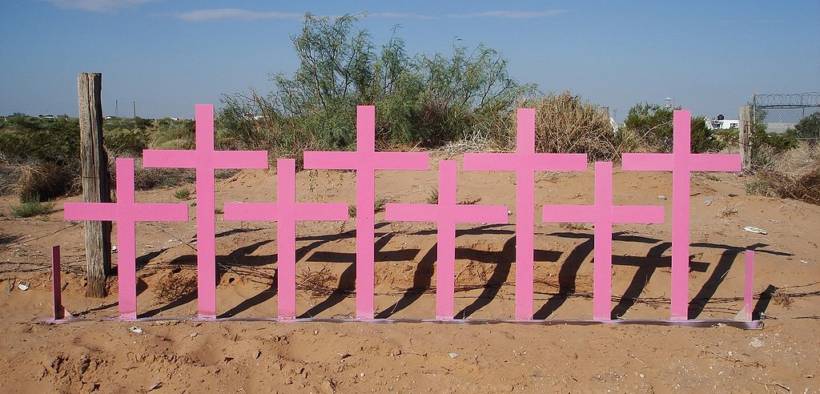Mexico’s Day Without Women

“In Mexico it’s like we’re in a state of war; we’re in a humanitarian crisis because of the quantity of women that have disappeared or been killed.”
On March 9, the day after International Women’s Day, thousands of Mexican women went on strike to protest the Country’s staggering rates of violence against women.
On Sunday March 8 roughly 80,000 Mexicans, women and men, marched in Mexico City asking for justice and equality. The next day thousands of women disappeared from public spaces across Mexico. It’s probably impossible to get an accurate count of how many women participated in Monday’s strike, but the impact was highly visible and undeniable. Images from Mexico on the 9th show mostly empty buses, half deserted classrooms and workplaces, and streets devoid of women. Because women make up about 40% of Mexico’s work force the strike will have economic impacts as well, potentially costing the country up to a billion dollars.
A Dangerous Place to Be A Woman
Femicide and other gender motivated violence against women is a global problem and no country is immune. But Mexico’s rates of murder, rape, and assault against women are bad, and have been getting markedly worse in recent years. Femicides in Mexico have gone up drastically in the last five years, between 2018 and 2019 alone the number increased by 7% to 3,825. On average 10 women in Mexico are murdered every day.
Of the thousands of Mexican women killed over the last year, two highly publicized deaths in February seemed to create a tipping point and inspire national level action. When Ingrid Escamilla was murdered last month by her boyfriend tabloids choose to cover the story using gruesome photos of her badly mutilated body. Then just days later seven-year-old Fátima Aldrighett was kidnapped, sexually assaulted, and killed.
What Mexican Women Want
The strike was organized quickly with groups and individuals around the Country getting on board. One of the key organizers was “Las Brujas Del Mar”. Their Facebook page describes them as “a feminist collective from Veracruz, Mexico.” A March 7 post asking for international attention for the strike explained, “We’ve decided to take a stand against the exacerbated wave of violence in our country and on March 9 we will have “a day without women.””
María de la Luz Estrada, coordinator of the National Citizen’s Observatory of Femicide told AP News “In Mexico it’s like we’re in a state of war; we’re in a humanitarian crisis because of the quantity of women that have disappeared or been killed.”
NPR spoke with Ileana Lopez, an administrator at a pharmaceutical company who participated in the strike, “This is a very important cause, it’s not a game, not a vacation day. Women have to fight for their rights every day.”
Government Response
Women who work in government in Mexico were given paid time off to participate in the strike and President Andres Manuel Lopez Obrador had indicated that federal workers were free to join the strike. However, he also remarked last week that he believed Mexico’s women’s movement had been infiltrated by his opposition. Others in his administration also seemed to misunderstand or disagree with the strike. Irma Sandoval the Public Administration Secretary Tweeted a suggestion that instead of striking at home on the 9th where they might be tempted to “wash dishes or clean clothes” women should go out and men should stay in.
Legislatively, the government is focusing on tougher criminal penalties as the solution to femicide. In February one house passed a measure to increase prison terms for femicide and sexual abuse of minors. The measure still needs to pass the Senate.
At the local level Mexico City’s first woman mayor Claudia Sheinbaum had pledged last July to eliminate violence against women. However, her response to the strike was mixed, she initially condemned the day without women, but then later ordered city organization to not take action against women who participated.
There has been much speculation about the causes for the high rates of violence against women, many sources mention a culture of “machismo.” Mexico’s rates of violence overall have also been accelerating which is likely related, but femicide has been increasing more quickly than the overall murder rate. Whatever the reason for the violence changing it will likely require systemic cultural changes as well as political action. Because the strike was personally felt by so many and impactful on a national scale it may serve as a powerful driving force to create the kinds of changes Mexico needs to save the lives of Mexican women.







